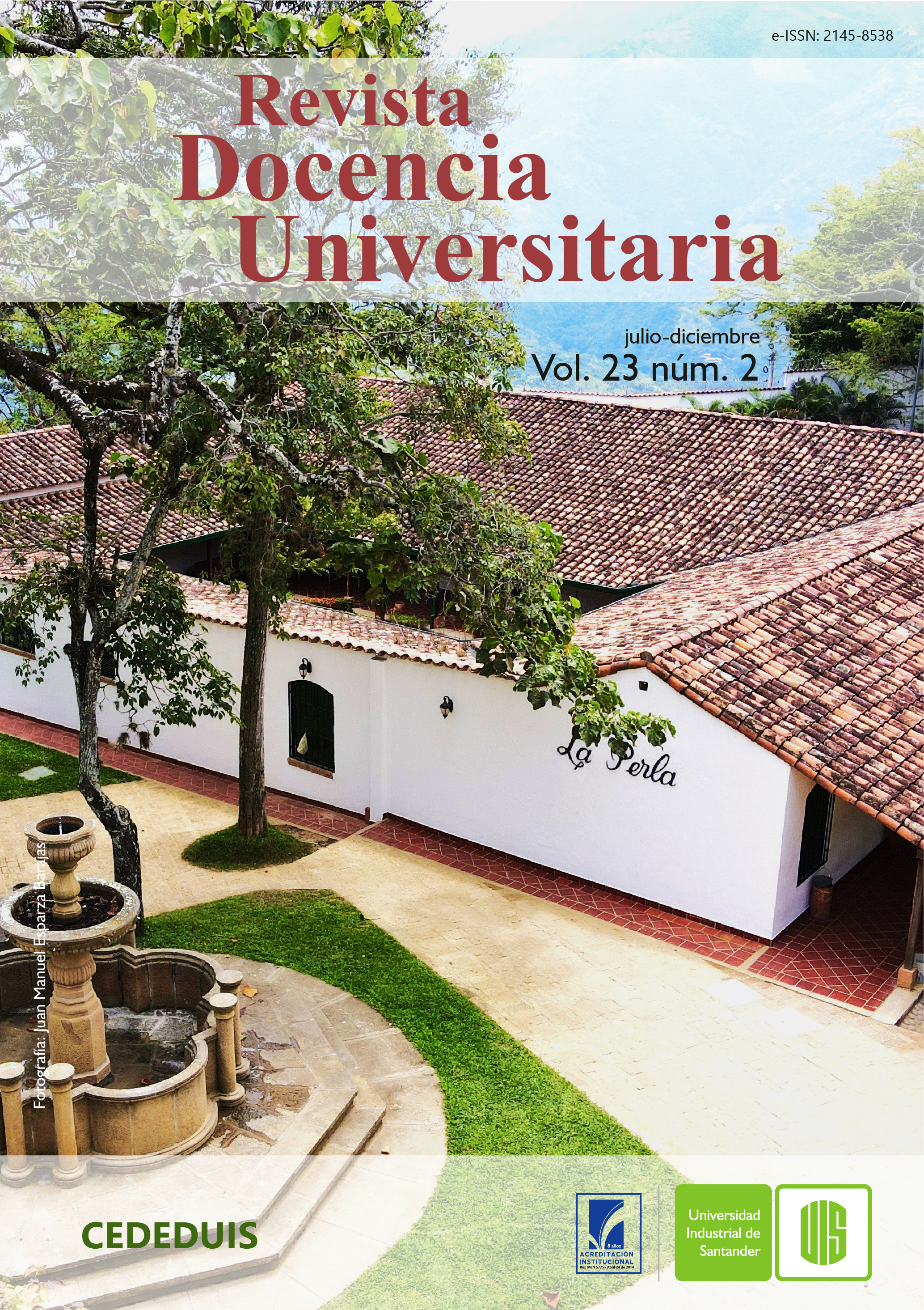Published 2022-12-31
Keywords
- Technology,
- augmented reality,
- physical education,
- athletics,
- academic performance
How to Cite
Copyright (c) 2022 Revista Docencia Universitaria

This work is licensed under a Creative Commons Attribution 4.0 International License.
Abstract
The article shows how the seventh-grade students of the San Agustin educational institution improve academic performance in the subject of athletics in the area of physical education through a learning environment involving augmented reality. the methodology used in the framework of the research was through a mixed approach. Data collection was carried out through the application of diagnostic tests, which allowed the organization of information and the analysis and measurement of results. To achieve the objective and validate the hypothesis, a diagnosis is made, through a Google form to collect information and investigate the student's deficiencies in the subject of augmented reality and athletics. For the design phase, dynamic and effective teaching strategies were implemented to integrate content and tools according to the identified needs. An exploration phase in which precise instructions are given on how to download the different applications based on augmented reality. An application phase, where the relevance of student learning on the subject of athletics is tested and finally the organization of results, where a detailed analysis of the research is carried out, thus giving the verification of the hypotheses raised and the formulation of conclusions. With this research, it was possible to conclude that augmented reality is a great tool to improve teaching-learning processes in physical education, since observing the results of the post-test improved the percentages in the different applied variables.
Downloads
References
- Aranguren Sánchez, B., Hernández Sampieri, R., Polit, Denise y Hungler, B., & Tamayo y Tamayo, M. (2017). Métodos de recolección de datos. Publicaciones y Recursos Educativos Más Amplio de La Red.
- Campos Covarrubias, G., & Lule Martínez, N. E. (2012). La Observación, Un Método Para El Estudio De La Realidad Observation, a Metody Foring the Estudy of Reality. Xihmai, VII(13).
- Charres, H., Villalaz, J., & Martínez, J. (2018). Triangulación: Una herramienta adecuada para las investigaciones en las ciencias administrativas y contables. FrecoSapiens, 1(1).
- García., M. P. & García., M. (2012). Los métodos de la investigación. Universidad de Murcia.
- Hernández, C. E., & Carpio, N. (2019). Introducción a los tipos de muestreo. ALERTA Revista Científica Del Instituto Nacional de Salud, 2(1). https://doi.org/10.5377/alerta.v2i1.7535
- Hernandez, S. R., Fernandez, C., C & Baptista, L. M. (2008) Metodología de la Investigación. Quinta Edición. McGRAW-HILL
- Hernández Sampieri, R. y Mendoza Torres, C. (2020). Metodología de la investigación - Las
- rutas cuantitativa, cualitativa y mixta. McGraw-Hill Interamericana. https://www.ebooks7- 24.com:443/?il=6443
- Herrera, C. D. (2019). Educación vivencial–humanista. HELIOS, 2(2).
- Rodríguez, D., & Meneses, J. (2011). El cuestionario y la entrevista. UOC Universitat Oberta de Catalunya.
- Rivadeneira, J., De La Hoz, A., & Barrera, M. (2020). Análisis general del spss y su utilidad en la estadística. E-IDEA-Journal of Business Sciences, 2(4).
- Shuttleworth, M. (2008). Diseño Cuasi-Experimental. Artículo Científico.
- Trespalacios., J. Vásquez., R. & Bello., L. (2005) Investigación de mercados: métodos de recogida y análisis de la información para la toma de decisiones de marketing. Ediciones Paraninfo.

